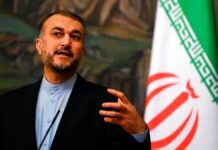
The Transportation Security Administration chief told Congress on Tuesday that airport lines are shrinking because the agency has focused on keeping them moving at seven mega-airports.
“If you can prevent problems from happening there, you don’t have problems that cascade through the system,” TSA Administrator Peter V. Neffenger told the Senate Committee on Homeland Security and Governmental Affairs. “You really need to pay attention to these large hub airports.”
The ripple effects when there are delays at major airports are well known, but they generally are weather-related – when big winter storms or a massive line of thunderstorms cause an airport to close down or limit operations for a period of time.
This year, however, TSA staffing shortages, changes in security procedures and near-record numbers of passengers have made checkpoint lines the impediment that caused delays. The nation’s largest carrier, American Airlines, said last month that 70,000 of its passengers and 40,000 checked bags had missed their flights this year. United Airlines said it delayed 37 planes out of Chicago’s O’Hare International Airport one day in May so that passengers stuck in security lanes could make their flights.
Focusing on keeping the lines moving in seven big airports – in Los Angeles, Dallas, Chicago, Miami, Atlanta, Newark and New York’s John F. Kennedy – has been the mandate of a new TSA command center that Neffenger established to track the performance in each of them.
“You really need to look at screening, checkpoint by checkpoint, at the major airports across the country,” he told the committee.
Given the relative success – lines overall were shorter – during the four-day Memorial Day weekend, Neffenger expanded the command center’s monitoring mandate to the airports in San Francisco, Seattle, Phoenix, Philadelphia, Las Vegas, Denver, Boston, Minneapolis, Orlando, Houston, Fort Lauderdale and Detroit and New York’s LaGuardia.
Before Neffenger took the reins of the agency last July, cuts in the TSA budget had reduced its airport workforce of about 45,000 by 12 percent, and another 1,600 workers were scheduled to depart this year.
“Long-term, we know we need to right-size TSA to ensure we meet the demands put upon us,” Neffenger testified. “I believe that TSA is smaller than it needs to be to meet the demands of the system.”
The committee also heard from John Roth, the inspector general of the Homeland Security Department, whose report last year that his undercover operatives were able to slip through airport security checkpoints with weapons and phony bombs more than 95 percent of the time caused upheaval at the TSA.
“TSA is now, for the first time in memory, critically assessing its deficiencies in an honest and objective light,” said Roth, who has been harshly critical of the agency in the past. “The stakes are enormous. TSA cannot afford to miss a single genuine threat without catastrophic consequences, and yet the terrorist only needs to get it right once.”
A key reason that TSA found itself short-staffed this year was that under Neffenger’s predecessor, John S. Pistole, the agency had pivoted to an intelligence-based approach that suggested the need for fewer checkpoint screeners.
After Roth’s scathing report, Neffenger ended a practice that allowed randomly selected passengers to go through less-stringent screening.
“While reliance on intelligence is necessary,” Roth said, “we believe that TSA in the past has overstated the effect of reliance on intelligence and a risk-based approach. There is no substitute for the checkpoint. Each and every passenger must be screened.”
Neffenger said that 742 million passengers are expected to fly this year- 99 million more than three years ago.
The TSA said 768 newly trained agents are expected to join the lines this month. If Congress follows through on a request to shuffle $28 million in TSA funds, 2,784 part-time workers can be shifted to full-time status. Elevating those workers to full time will enable TSA to screen about 82,000 more passengers each day, Homeland Security Secretary Jeh Johnson said.
(c) 2016, The Washington Post · Ashley Halsey III
{Matzav.com}











